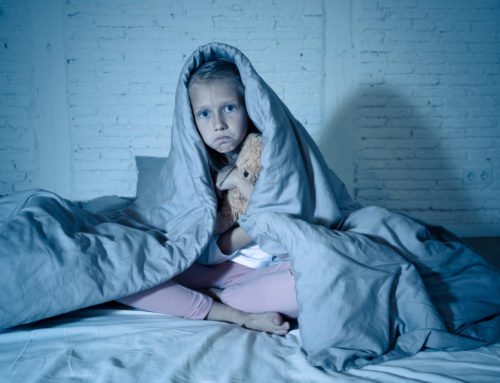I have been working with children and adolescents for the last 36 years as a licensed social worker/ family therapist (26 years) and as a teacher (21 years). Through all this experience, I have learned what the root causes of teenage suicide are. In my first blog on teenage suicide, I shared five root causes of teen suicide as well as some warning signs and risk factors that could help you tell if your child is at risk of suicide. In part 2 of the series, I shared five additional root causes to help explain why teens commit suicide and how you can better understand and help your child if you think they’re having thoughts of suicide, are talking about suicide, or have made suicide attempts. In part 3 I will share the rest of the root causes and some final thoughts to help you as a parent.
11. Instant Gratification — I Can’t Wait!
We live in an instant gratification society where we don’t have to wait for anything. Terrie Moffit and Avshalom Caspi, professors of psychology at Duke University, along with a team of researchers, studied 1000 children for 30 years to figure out what is most important related to wealth, health, and public safety (Research study). They discovered two critical skills for children to learn to ensure success in life.
These two skills are connected to social emotional learning. The first critical skill is the ability to modulate emotional expression or in other words, self-regulate emotions. The second critical skill is the ability to delay gratification or in other words, the ability to wait by controlling impulses and managing emotions. This skill is not being practiced or developed in children or teenagers because we live in an instant gratification society where waiting and patience are not required as much as in the past.
In order to wire any skills into our brains so they become lifelong habits, we need to practice them as often as possible. Young people are not practicing how to feel uncomfortable emotions and calm themselves and how to wait and be patient. Young people expect everything to come quickly, and this can be problematic when it comes to setting goals and sticking to them through the stress, challenge, and discomfort of achieving goals. Life is going to challenge young people, and they need to be able to be able to feel uncomfortable emotions and impulses and to able wait and be patient in order to navigate through the ups and downs of life and achieve goals.
If young people are not able to feel uncomfortable emotions and calm themselves, they might push down the uncomfortable emotions and try to avoid or escape them. Pushing down or avoiding emotions can make them more intense and lead to depression and more extreme anxiety. If young can’t feel uncomfortable emotions, they are not going to be able to delay gratification and wait patiently. Developing social emotional intelligence is like developing any other form of intelligence like reading, writing, or math. Setting goals, persevering, and delaying gratification are required for any form of learning and growth in life. Without the ability to feel uncomfortable emotions and to delay gratification, teenagers can be more susceptible to intense depression and anxiety and doing something impulsive like considering suicide as a way of out of discomfort of depression and anxiety.
12. The Dark Side of Social Media — Am I Good Enough?
Social media has an incredible influence on the mental health of young people. Teenagers often feel insecure about themselves, especially in terms of their bodies. They want to belong to groups, but they also want to be loved and accepted for who they are. Social media creates unrealistic expectations to look perfect and be perfect and if you do, you will be liked. This sets up a scary situation where teenagers are constantly comparing themselves to other teenagers, and many of them often feel inadequate and not good enough. This sense of comparison can lead to a low self-esteem and even to depression. The “looking good” mentality which permeates much of our society is prevalent on social media.
High school students also use social media to express emotions and to bully and make fun of other teenagers. This can be very hurtful and damaging to the teenagers who are being bullied.
Teaching SEL skills in homes and in classrooms can help students to develop the abilities to feel uncomfortable emotions, calm themselves and resolve conflicts in a win/win manner. If young people develop these abilities, they won’t need to bully and use social media to express emotions and deal with conflicts.
It is also important to have conversations with your child about the do’s and don’t’s of social media and how to show respect toward others on social media.
13. Confusing Messages — Do As I Say and Not As I Do!
Society is sending very confusing messages about suicide to those who are dealing with mental health issues like depression, anxiety, and PTSD. On one hand, society says to anyone who is thinking of suicide that they should just reach out for help and call a help line and/or see a therapist. That is great advice, but that advice can sometimes create more shame for those who are suffering.
These action steps speak about what the individual can do to help themselves, but it doesn’t highlight the incongruence and inconsistency between what is said and what is done by adults in society. Society wants to support those suffering with mental health issues, but doesn’t put as much emphasis on supporting changes that are needed to create a society that really supports a major paradigm change where mental health will be valued and honored.
Many adults don’t model or practice the suggestions that they prescribe for those who are suicidal. If we really want to reduce suicides and change the paradigm of stigmas and shame that has been passed along for centuries, we all need to practice what we preach related to being vulnerable and authentic in sharing emotions and reaching out for help.
In mainstream society, we don’t see adults modeling vulnerability by sharing their emotions like sadness, fear, anger, or hurt openly. The old stigmas and beliefs are still prominent in every fabric of society and in forms of entertainment. Those who are suicidal might be checked in to hospitals or day treatment programs or get put on medications, but they eventually have go back to schools, work places, or homes which still function with the old beliefs and stigmas.
There are constant messages in society that perpetuate mental health stigmas and outdated beliefs. People apologize for crying in public or are embarrassed to be vulnerable and express emotions like sadness, fear, hurt, or anger in public.
The number one suicide prevention tool is healthy and empathetic connection. Human beings need healthy connection for mental health. When we can be vulnerable and real with people who can also be vulnerable and real and when we can listen with deep empathy and care, our resilience is strengthened and we can cope with any mental health issues much better.
A Few Last Thoughts
Spend time once a week doing something with your teenager that they love to do. Be sure to eat a couple of meals a week with your teenager or as a family and turn off all electronic devices. Take time as often as possible to really listen to your children and try to feel what they are feeling. Seek to understand them and what they are sharing without an agenda to change them or give them advice unless they ask for it. Children need to be seen, to be heard, and most of all, to be understood. Your non-judgmental listening will foster a deep connection with your children over time.
Check out the part 1 and part 2 of this blog for other root causes of teenage suicide and for warning signs of suicide. If you have any concerns about your child’s mental health, it is important to seek out support from a trained mental health professional. With the right treatment plan and support, suicidal ideation and depression are treatable mental illnesses.
Remember that one of the greatest ways to impact your child’s mental health is through your vulnerability, and authenticity. Being vulnerable and sharing your challenges with expressing and feeling emotions and other social emotional skills is more effective than giving advice to your teenagers. Sharing your vulnerability lets them know that it is OK to be vulnerable and to be imperfect and human. The most important thing is to let your teenager know that you are always available to talk and support.





